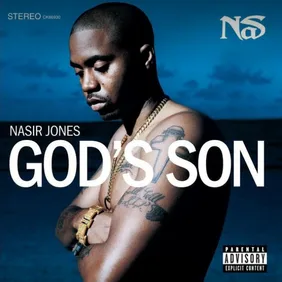Like the protagonist of a long-running book series, Nas has provided enough information to build a deep-rooted character study. His journey has been outlined since he was nineteen, penning the verses that would become Illmatic. Drawing from the pain of loss, the death of his best friend Willy “Ill Will” Graham. Real pain put to page to later be consumed as entertainment by the masses. Oftentimes, the telling of the story is more important than the story itself. For Nas, even a simple walk up the block can be a sensory experience dense enough to span an entire sixteen. The reason comes down to his attention to detail, the hip-hop equivalent to mise en scene.
The importance of setting, for one, is never lost on Nas. Listeners are vicariously transported to not only Queensbridge, but the various New York locales that formed the basis of his coming-of-age. On King’s Disease highlight “Blue Benz,” Nas evokes The Tunnel with pristine clarity. Even those who have never set foot in the legendary New York nightclub, where Jessica Rosenblum’s Mecca party took place every Sunday, welcoming rising performers like DMX, Prodigy, and Jadakiss. Chris Lighty, the late head of Violator Records, used to work security, a stone that Nas does not leave unturned. “I used to be at The Tunnel twenty deep in a huddle, razors on us that'll make skin bubble,” he raps, setting the tone within his opening bars. “Chris Lighty let me in a few times with nines, that's on God, wish you woulda walked by and bumped me hard.”
L. Cohen/WireImage/Getty Images
Nas’ detail-economy should not go unnoticed. Not only does he manage to paint a more vivid picture in four bars than fellow rappers can paint in an entire song, but to simultaneously ground listeners into the headspace of his younger self. A dangerous man with designs to escalate a situation into violence at the slightest glare. We don’t have a set time or place, but Nas provides enough information for us to make inferences. Chris Lighty’s turn as a doorman places this one in the early nineties, while his recognition of Nas likely confirms that it’s post-Illmatic. It’s fair to say that an entire piece could be published on the opening lyrics alone, but Nas’ masterful penmanship only continues.
Before the verse concludes, he proceeds to achieve title in an interesting fashion. “I knew this chick, she had a blue Benz,” he raps, catching attention like a lightning rod. “A Jersey penthouse, she used to pimp girls that would turn rich men out.” Already providing ample room for a mental picture, Nas establishes this mysterious woman as the head of a criminal enterprise. One that appears to have made quite the lasting impact, having endured in his headspace for so long. “Her coke habits was so savage, she hear voices and see ghosts on the average / Of her stepdad, he raised her from a carriage,” Nas continues, thickening the plot with further characterization.
Theo Wargo/WireImage/Getty Images
While it might have been easy to infer a passing acquaintance, it becomes clear that this was a woman who confided her darkest fears to Nas. Or perhaps not -- perhaps he simply observed them, astute judge of character that he is. Either way, it’s clear that she left quite the impression, even if he doesn’t serve up the subtext with a spoon. Suddenly, “Blue Benz” becomes more personal than the hard-hitting Hit-Boy instrumental might have led you to believe. Yet rather than exploring this one further, Nas presents it as a fragment, a fleeting glance. The significance of this mysterious character, rendered with such depth, is left to be unpacked by the listeners. It’s our job as engaged listeners to draw our own conclusions.
Though Nas can and has penned elaborate narratives, often lined with the same immersive slices of life, “Blue Benz” highlights another side of his authorial prowess. The ability to say more with less information, to provide emotional baselines without spelling things out in jumbo lettering. The understated storyteller of our times.







